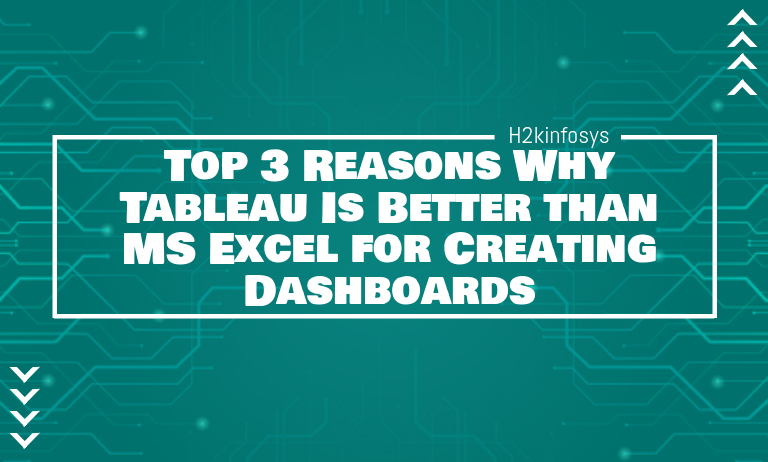Data Visualization is a relatively new thing in the IT industry, but it is gaining more importance with each passing day. When it comes to the data visualization domain, there is no better choice than Tableau. The known fact is our mind remembers the visual representation for a longer time rather than reading or listening. How cool will it be to represent a large amount of business data into easily understandable visual design? If you want to make this possible, you need to take tableau training classes and master the art.
The traditional approach to representing the business data is through Microsoft Excel. Still, it is an old school way, and when the new and improved options are available at a reasonable cost, it makes sense to use them. So, let us look at the top three reasons why Tableau is more effective than Excel. Before that, let us understand what Tableau a bit is.
What is Tableau?
Tableau is the rapidly growing tool used to create attractive visualization representation of enormous data sets using different business applications. The demand for Tableau software is increasing because of its ease of use and other benefits. It is being used in the Business Intelligence industry widely nowadays. It helps the Tableau professionals to craft their presentation with the help of the number of available plots, charts, graphs, and other kinds of designs. That is the reason many tableau training classes are gaining popularity in the last couple of years.
Top three reasons why Tableau is better than MS Excel.
Data Discovery
Both MS Excel and Tableau are helping the businesses in getting the needed insights from the available data. But the main difference lies in the ability to explore data and harnessing the information required from it.
If you look at Excel, you must have the expectation and idea where your data needs to lead to gain critical business insights. Excel stores the data in a tabular format, so your way to getting insights involves mapping your answers, creating visualizations, building formulas, and analyzing the data. This makes it really hard to explore information at the granular level and makes the insight process less flexible.
On the other hand, Tableau offers a free exploration of data without knowing the answer before or on the process of exploring. It comes with drill-down, data blending, and other built-in features to find trends and correlations and then go deeper to understand what caused all these changes. This is where Tableau’s versatility gives an extra edge to the business to get the most important insights. Tableau offers excellent benefits to the user, and if you are looking to learn Tableau, you can attend tableau classroom training or tableau online course to learn it.
Automation
Automation is the thing many organizations are looking to adapt and get the maximum benefit out of it. Of course, it needs a fair amount of investment initially, but it offers huge savings with accurate processing in the long run. Many companies are looking at updated data to make vital decisions. In that matter, both MS Excel and Tableau are capable of working with live and static data from multiple data sources.
In Excel, automatically refreshing the Excel worksheets can be made with manual programs and by creating macros to update the data once the file gets open automatically. You can create simple macros by using macro recorder tools and Power Pivot features. But if you are dealing with complex data sets, it requires an advanced level of VBA. Using the VBA, creating macros is time-consuming, but it helps to deal with the repetitive task to complete in less time.
In Tableau, it offers more flexibility with intuitive processes and calculations. It allows the users to create customized visualization with ease that is not possible in Excel.
Visualization
In Excel, you need to manipulate the data first from the cell level and then build visualization manually with charts, graphs, and PPTs. It requires a deeper understanding of how Excel work.
But in Tableau, visualization available from the starting point and lets you know the differences. It helps to drill down the data from the granular level and build attractive representations of data.























